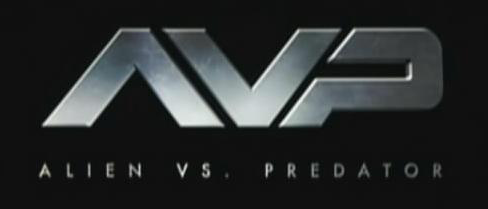A handy how-to to make any word look like it’s from [cue theremin music] THE FUTURE! Via Dave Addey at Typeset in the Future. I’ll be watching his blog for more posts on sci-fi type.
How To Make Your Text Look Futuristic
We’ve already seen how Eurostile Bold Extended is spectacularly effective at establishing a movie’s timeframe. But if Eurostile isn’t enough, there’s more you can do to clarify your movie’s timeframe. I’d like to introduce you to six easy rules that are pretty much guaranteed to position your text firmly in the FUTURE.
We’ll start with some simple sans-serif text, such as this randomly chosen word in Eurostile Bold. So far, so 2016:
Rule 1: First, let’s add an italic slant. We want it to look like the text is stretching towards 2020:
Hmm. It’s still a little boring. Rule 2: What if we make things a bit more curvy in some places, and a bit more angular in others? I hear that’s all the typographic rage in 2035:
That’s much better! There’s still more we can do, mind. Rule 3: How about adding some consummate Vs to a few of the letters? Yeah! That’d be cool!
Hello, 2050:
There’s still something missing, however – we’ve forgotten to take into account the devastating Kern Wars of 2067. Rule 4: Let’s combine a few letters into one, to make sure we’re not violating the Kern Tithe:
Now we’re talking! Let’s end with Rule 5: Remove an entirely pointless and arbitrarily segment of the text. In this case, we’ll remove a horizontal line from the majority of the word:
WOAH. That looks amazing! Who knew 2092 was so easy to reach?
D’you know what – I think we need a Rule 6 too. Let’s add a noise texture, some shamelessly steel-brushed metal, and a bit of moody blue lighting:
Finally, let’s emboss it to within an inch of its life:
…and add a god-damn star field:
BOOM. Welcome to the FUTURE!
Here’s how it looks if you put the whole thing together:
Now. Various permutations of these six rules have been applied in many different movies. Perhaps the Ur Example is Ridley Scott’s Blade Runner, which I may have slightly copied in my example above:

Blade Runner is far from the only example, however. The logotype for 2003’s Battlestar Galactica miniseries follows pretty much every rule to the letter (and adds some extruded Eurostile Bold Extended for good measure):

Transformers is similarly all-encompassing, taking the brushed metal effect to the extreme:

Guardians of the Galaxy also uses pretty much every trick apart from the italics:

…whereas RoboCop is all about those consummate Vs, plus the world’s most extreme embossment:

Star Wars, of course, takes Rule 4 and runs with it all the way to the bank:

…whereas The Amazing Spider-Man follows nearly all of the rules (and takes Rule 2 to extremes), although it will be receiving a visit from the Tithe Kern Police for Opportunities Missed:

Captain America: The Winter Soldier really likes applying Rules 2 and 3, plus some of the best Rule 6 you’ll ever see:

Alien vs. Predator is ridiculously italic and metallic:

G.I. Joe: Retaliation uses every trick apart from the kerning:

And WALL·E is all about Rule 2:

Finally: if you have any lingering doubts that these six rules spell FUTURE, here are Rules 1, 2, and 4 in action for the iconic logotype for none other than Back To The Future itself:

Hello, the FUTURE. It’s good to be back.
UPDATE: Several people have noted that I missed pretty much the textbooking-est textbook example of this trope – namely, Star Trek: The Next Generation:

I mean seriously. It even has a God-Damn Star Field in the background. (I swear I didn’t have this logotype in mind when I wrote the article, but boy, does it prove the point.)
FUN FACT: An expanded version of this article appears in the Typeset in the Future book, available on December 11, 2018. You can pre-order it now on Amazon.














